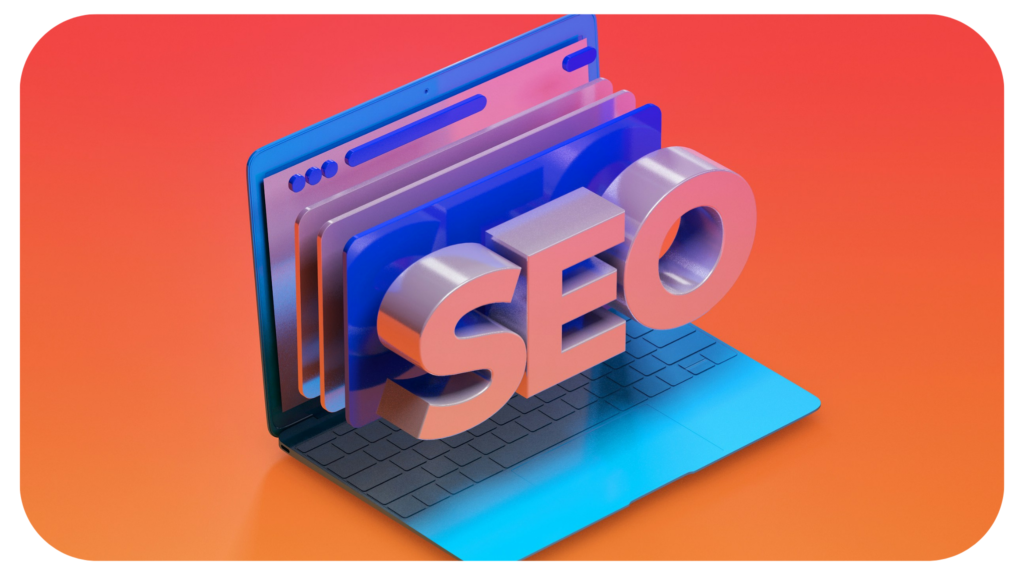The Impact of User Experience on SEO with Insights from Bruce Shi
This post was last updated on February 15th, 2025

User experience (UX) is a crucial element in digital marketing strategies. In today’s competitive online landscape, good UX directly affects how search engines rank websites. Poor UX can lead to high bounce rates and low visitor retention, signaling search engines that your site is not user-friendly.
The connection between UX and SEO is undeniable. Search engines like Google prioritize websites that offer a seamless user experience. A site that’s easy to navigate and provides valuable content is more likely to rank higher in search engine results pages (SERPs). This makes UX a vital part of your SEO strategy.
SEO specialist, Bruce Shi, understands that the user experience impact on SEO can be the difference between a first-page ranking and getting lost in the shuffle. Through his professional lens, he explores how, with user-centered design and UX optimization, businesses can improve their search engine rankings but also enhance user satisfaction and conversions.
What is User Experience (UX)?
User Experience (UX) is all about how a person feels when interacting with a website or application. It’s the overall impression they get from using the product. Good UX means a site is easy to use, engaging, and meets the user’s needs without confusion or frustration. UX goes beyond just design and includes everything that affects a user’s interaction, from how fast pages load to how intuitive the navigation is.
Several elements together create a seamless user experience. This is about how easy it is for users to achieve their goals on your website. A usable site is intuitive, clear, and simple to navigate.
“Think of usability as the backbone of UX,” says Bruce Shi. “If users can’t find what they’re looking for quickly, they’re likely to leave and never return.”
Accessibility ensures that everyone, including users with disabilities, can access and use your website. Accessibility features like alt text for images, keyboard navigation, and screen reader compatibility are crucial. Visual appeal matters as well in user experience.
A site that looks good can create a positive first impression and build trust. Aesthetic design should also support usability and accessibility by using clean layouts, readable fonts, and a logical color scheme. When these elements work together, they create a user experience that’s engaging, efficient, and pleasant.
User-centered design is crucial because it puts the user at the heart of the design process. Instead of assuming what users need or want, it involves them in the creation process. This approach ensures that the final product meets their needs and solves their problems.
Simply put, happy users are more likely to become repeat visitors and customers. By prioritizing user-centered design, businesses can create products that perform well while delighting and retaining users. This makes user-centered design a cornerstone of both UX and SEO strategies.
How UX Impacts SEO
User experience (UX) plays a crucial role in how websites rank on search engines. A positive UX can impact various metrics that search engines consider when ranking sites.
Notes Shi, “When users find your site easy to use and engaging, it sends a signal to search engines that your site is valuable.”
A key factor in how UX affects SEO is user engagement. When visitors stay longer on your site, it shows they find your content useful and interesting. This is often measured by dwell time, which is the amount of time a user spends on a page before returning to the search results.
A positive UX can increase dwell time. If your site is easy to navigate and visually appealing, users are more likely to explore different sections and read more of your content. Another important aspect of UX is how quickly users leave your site, also known as the bounce rate.
A high bounce rate can hurt your SEO rankings. One key reason users bounce is slow page load speed. In today’s fast-paced world, users expect websites to load quickly. If your site takes too long to load, users will leave before even seeing your content. Optimizing your site’s UX includes improving page load speed.
Mobile usability is another crucial factor in the user experience impact on SEO. With more people using smartphones to browse the internet, search engines like Google prioritize mobile-friendly sites. If your site isn’t optimized for mobile devices, you risk losing a significant portion of your audience and harming your SEO rankings.
A mobile-friendly UX means your site adjusts seamlessly to different screen sizes, is easy to navigate with touch controls, and loads quickly on mobile networks. When users can easily access and use your site on their phones, it enhances their overall experience and keeps them engaged longer. This, in turn, signals to search engines that your site is user-friendly, positively impacting your rankings.
Best Practices for UX Optimization
Optimizing the user experience (UX) on your website is crucial for both user satisfaction and improving your search engine rankings. Website navigation can make or break the user experience. Poor navigation can leave users frustrated and more likely to abandon your site.
Content readability is crucial for keeping users engaged. If your content is hard to read, users are likely to leave your site. Readable content is like a good conversation – clear, engaging, and easy to follow. Make sure your readers can effortlessly consume and understand your information.
Ensuring Fast Page Load Times
Page load speed is a critical factor in both user experience and SEO. Slow pages can frustrate users and lead to higher bounce rates. Just like nobody likes waiting in long lines, users don’t appreciate waiting for slow-loading pages. Speed up your site to keep users satisfied and improve your search engine rankings.

The Future of UX and SEO
The relationship between User Experience (UX) and SEO is constantly evolving. As technology advances, so do the ways in which users interact with websites and search engines. Understanding these changes is key to staying ahead in both UX design and SEO strategies.
Voice search is becoming a major factor in how users find and interact with online content. As more people use voice-activated devices like smartphones, smart speakers, and even cars, the way we approach UX design and SEO has to adapt.
With voice search, you have to think about how people speak, not just how they type. This change is pushing UX designers and SEO specialists to be more intuitive and user-focused.
Artificial intelligence (AI) is transforming how we approach both UX and SEO. With AI, we can create personalized experiences that cater to the individual needs of users. This improves user satisfaction and has significant SEO benefits.
“AI and personalization are like having a custom-tailored suit instead of something off the rack. The fit is better, and the experience feels more exclusive. This level of personalization leads to happier users and better SEO performance,” says Shi.
As technology continues to evolve, the intersection of UX and SEO will only grow more complex. Staying informed about trends like voice search and AI will help you create user experiences that are enjoyable but also optimized for search engines. Investing in UX is an investment in your site’s future.
Recommended – Maximizing Online Visibility: SEO Expert Bruce Shi on Effective Strategies
Recommended For You
7 Best Ways to Optimise Your Landing Pages
Most Inside
Most Inside offers high-quality recommendations and valuable updates to enhance all aspects of your life, providing premium guidance and enriching experiences.




